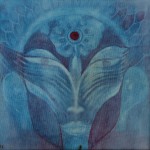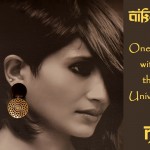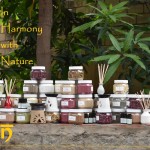Mithila Paintings

Legend has it that Madhubani paintings or Mithila Paintings originated at the time of the Ramayana, when King Janak commissioned artists to do paintings at the time of marriage of his daughter, Sita, to Lord Ram. The modern world was introduced to Madhubani paintings after the drought in the 1960’s when the local population had to look at occupations other than agriculture to sustain them.
Madhubani paintings are predominantly made by the women of villages around the areas of Mithila that is present day Madhubani, meaning forests of honey. The skills have been passed on through centuries so the content and the style have largely remained the same. The paintings mostly depict man and his association with nature, social conventions and mythology.
Traditionally done on freshly plastered mud walls but they are now also done on cloth, handmade paper and canvas, though the colours used continue to be derived from plants. Black is achieved by mixing soot with cow dung, or from kajal; yellow from turmeric or pollen and the milk of banyan leaves; blue from indigo; red from the Kusum flowers or red sandalwood; green from the leaves of the wood apple tree; white from rice powder; and orange from Palash flowers which are abundantly found in the local region.
Over the years regional experts have identified 6 distinctive styles that make up the range of Madhubani art form.
“Kacchani” is a line style that primarily uses black and red. The colours are not filled in. The subject is human and his association with nature.
“Bharani” favours mythology, especially the theme of raas-lila. Fish and peacocks are also a popular. Here the colours are filled in.
“Godhna” is heavily influenced by Chattisgarh folk art. The predominant theme is goddess Kali. These paintings are only ever done by the Brahmin ladies who sing ritualistic songs while painting the Chinnamasta and her consorts.
“Tikunia” is the most commonly available style which is made in the areas surrounding Patna. The lines are thick, the figures are stunted and there is no finesse in execution.
“Tantrik”, as the name suggests, deals with themes of yoga and karma with depictions of Shiva, Vishnu, and Mahesh. These paintings will have no elements of sun, fish, peacock, trees, or leaves.
“Sanjhela karbar” is painted for special occasions like weddings. The only colours used for this are red, yellow and gold. The fabric is first dyed with marigold / pomegranate to achieve an earthy beige look. The painted cloths are then worn as auspicious turbans or stoles for the wedding.




2 Comment(s)
1
1
Leave a Comment